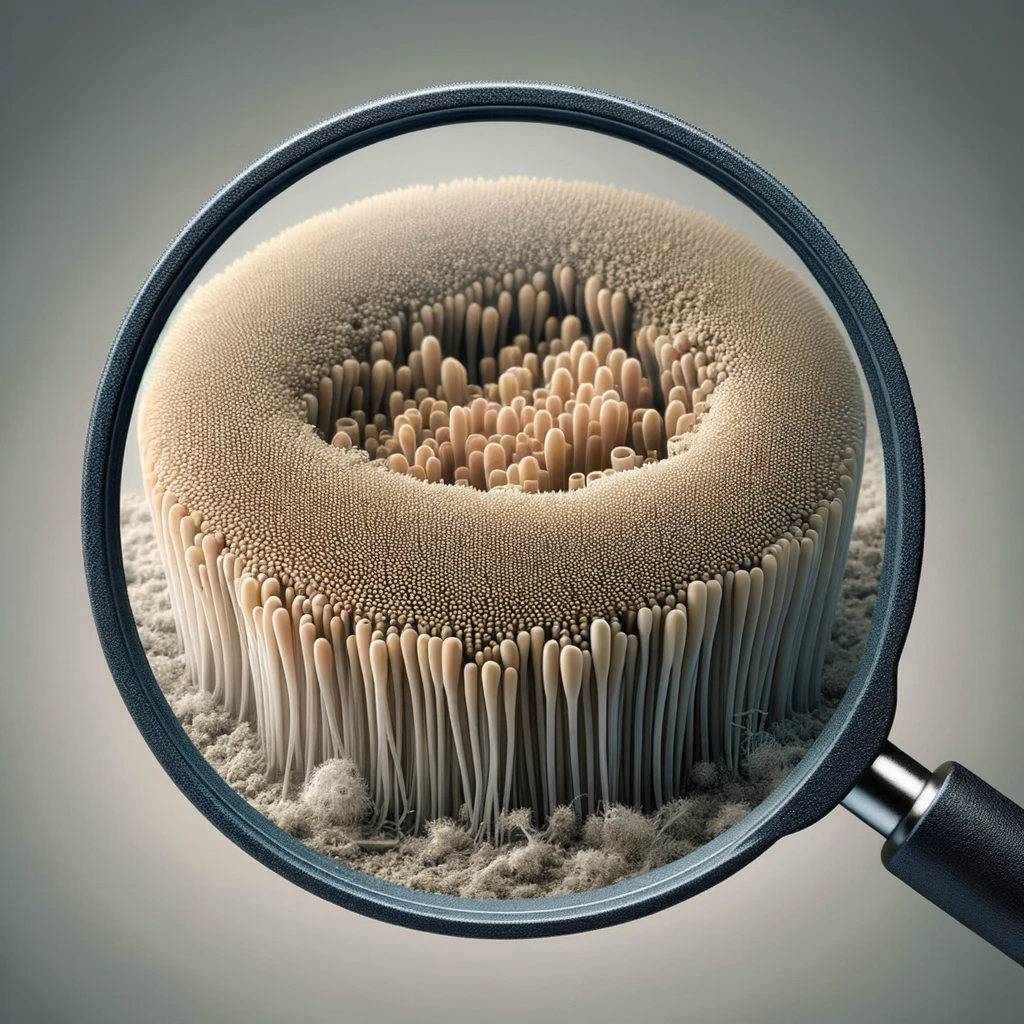Indice
Effects of Mycotoxins on Human Health
Mycotoxins are highly toxic substances produced by fungi, and in particular, Aflatoxins are considered to be among the most carcinogenic substances in existence.
Impact of Mycotoxins on Health and Nutrition
When it comes to health and nutrition, there has been increasing talk in recent times about issues related to pollution, and the presence of toxic substances in food. On the other hand, there is a search to analyze and address systems and methods to avoid such inconveniences, precisely to safeguard the healthiness of food and ensure greater safety for consumers.
The problem of mycotoxins is widespread around the world, and only recently has more detailed knowledge been acquired regarding the toxicity of these substances. The problem is very current, and it has now been established that they act on the body, both through ingestion and inhalation, causing significant damage, such as immunosuppression, DNA damage, liver damage, kidney damage, hormonal alterations (estrogen-like), and various metabolic alterations.
Details on Mycotoxins
Definition and Classification of Mycotoxins
Let’s take a closer look at what these mycotoxins are. Mycotoxins are toxic compounds (secondary metabolites), produced by various types of fungi (mycetes), mainly belonging to the genera: Aspergillus, Penicillium, Fusarium.
Environmental Conditions and Production of Mycotoxins
Under particular environmental conditions, when there are favorable temperatures and humidity, these fungi proliferate and can produce mycotoxins. Consequently, these substances can enter the food chain and contaminate food and feed, mainly cereals.
Sources of Contamination for Animals and Humans
Therefore, important sources can be:
- For Animals: Cereals, Peanuts, Extraction Meals.
- For Humans: Cereals, Derived Products, Spices, Dried Fruit, Milk and Derivatives, Eggs, Meat Products, Work Environments (Feed Mills).
Risks During the Food Production Process
Plant-based foods can be contaminated in the field, or during harvesting, processing, storage, and transportation. Storage is very important and at risk when uncontrolled temperature and humidity allow the development of mycotoxin-producing molds.
Specific Examples of Mycotoxin Production
An example, for Aspergillus Flavus, at 36/38°: mycelium development. 24/27°: Aflatoxin B1 production. 29/30°: Aflatoxin G1 production.
Variety and Characterization of Mycotoxins
About 400 different mycotoxins have been isolated and chemically characterized.
Complete Guide to Mycotoxins: Types and Impacts on Health
Aflatoxins: Properties and Health Risks
Let’s take a closer look at some of these mycotoxins.
Origin and Types of Aflatoxins
- AFLATOXINS: are produced by some fungi of the genus Aspergillus, in particular, Aspergillus Flavus, from which they take their name. Several are known, and in particular, 5 are considered important in terms of spread and toxicity: B1, one of the most powerful natural carcinogenic substances. B2, G1, G2, M1 (derived from the metabolism of B1 by animals fed with B1 contaminated feed).
At-risk Foods and Prevention
Aflatoxins are found in cereals (corn), dried fruit, oilseeds (peanuts), shell nuts, spices, tobacco. Contamination can occur both in the field and during storage, especially if there is humidity. Dairy products can also be contaminated, in this case, it is mainly aflatoxin M1, derived from feed.
Health Effects and IARC Classification
Aflatoxin, in addition to acute toxicity at high doses, can cause a reduction in immune defenses and some forms of cancer, especially liver cancer, in the long term. The IARC (International Agency for Research on Cancer) classifies aflatoxins in group 1, as agents definitely carcinogenic to humans. M1, on the other hand, is placed in group 2B, with possible carcinogenic action for humans.
Fumonisins: A Large Group of Toxins
- FUMONISINS: These are produced by fungi of the Fusarium genus. They represent the most numerous groups, with more than 140 toxins, divided into 4 subgroups: A, B, C, D. Of significant importance, we remember two: Deoxynivalenol (DON) and Nivalenol (NIV), which belong to group B. These mycotoxins are abundantly found in cereals (Wheat, Barley, Corn) and are responsible for various toxicosis.
Ochratoxins: Between Cereals and Beverages
- OCHRATOXINS: These are various species produced by the Aspergillus and Penicillium genera. They are predominantly found in Barley, Oats, Wheat, Coffee Beans, Wines, and Grape Juice. Ochratoxin A is the most implicated in causing toxic effects, predominantly at the level of the Kidneys and Liver. Interestingly, Ochratoxin has also been found in Breast Milk, due to the mother’s consumption of contaminated foods. The IARC classifies Ochratoxin in Group 2B, therefore, with possible carcinogenic effects for humans.
Final Reflections and Considerations on Food Safety
The list includes others, but those closer to possible toxicity for humans and related to widely consumed foods, such as cereals, dried fruit, or meat and dairy products, are included in this short list. I have previously mentioned Aflatoxins, given their presence in many widely consumed foods such as cereals.
Focus on Deoxynivalenol: A Mycotoxin Common in Cereals
I find it interesting to add more details about another mycotoxin unfortunately quite present in widely consumed cereals, such as Wheat. I am referring to DON (Deoxynivalenol or Vomitoxin).
Origin and Spread of DON
Produced by fungi of the Fusarium genus (Fusarium graminearum and Fusarium culmorum). In addition to Wheat, it is, unfortunately, also widely present in Oats, Barley, and Corn. It is perhaps the most widespread mycotoxin in food.
Mechanisms of Action and Effects on Health
Despite having a substantial body of studies available, its mechanism of action is not yet very clear. What we can report is that DON intoxication can cause a range of toxic effects, which I can partially list here: Inhibition of Protein Synthesis, Alteration of Membrane Structure and Mitochondrial Function, Vomiting, Diarrhea, Interferences with Hematopoiesis and Immune Defenses.
IARC Classification and Permitted Limits
The International Agency for Research on Cancer (IARC) classifies it in Class 3, meaning it is not considered carcinogenic for humans. However, it should be noted that a recent study has highlighted a possible co-participation of DON, with other mycotoxins, in the onset of Hepatic Carcinoma. I report, updated to March 2017, the permitted limits in Italy for DON:
- Unprocessed Durum Wheat and Oats: 1750 ppb.
- Cereals, Cereal Flour, Bran, and Germ intended for Human Consumption: 750 ppb.
- Bread, Biscuits, Sweets, Breakfast Cereals: 500 ppb.
- Foods for Infants and Young Children based on Cereals: 200 ppb.
Prevention and Risk Management of Mycotoxins
In light of what has been reported, before concluding, as a matter of information, I note that there is no Specific Therapy for such possible intoxications.
Prevention and Control in the Management of Mycotoxins
The most important weapons available are: Prevention, Feed Control, Decontamination, and especially the ability to ensure proper preservation (see Wheat stored in huge silos or transported in ships, not always up to the required hygienic conditions).
Importation and Comparison of Legal Limits
Another significant aspect is also related to the fact that many countries from which we import, for example, Wheat, but also other cereals, have legally permitted limits lower than those in force in Italy, (see Canada), for example, for DON. This means that wheat with DON levels exceeding their limits (lower than those in Italy), can be imported into Italy.
Conclusions and Recommendations
The conclusions that can be drawn from this brief exploration of mycotoxins are mainly related to prevention. Indeed, what should be done, especially concerning Wheat or other widely consumed cereals, is to be able to select agricultural companies that devote passion and dedication to cereal production, following particular attention for production, preservation, and transformation.
Risks in the Production Process
Each of these processes, if not carried out with the necessary precautions and in compliance with established procedures, is always exposed to the risk of mycotoxin development, which logically is found in the final products.
The Importance of Local Quality
The efforts of many agricultural companies, especially in Southern Italy, regarding Wheat, supported also by an optimal climate, result in high-quality productions with the guarantee of a moisture-free product, therefore without the potential risk of mycotoxin development.
Quality Markers and Health Protection
The marker of the presence of mycotoxins is one of the many parameters taken into account to obtain a consistently high-quality product, in order to protect the health of all, but also to restore proper value to local and national productions.
Article written by Dr. Francesco Lampugnani


